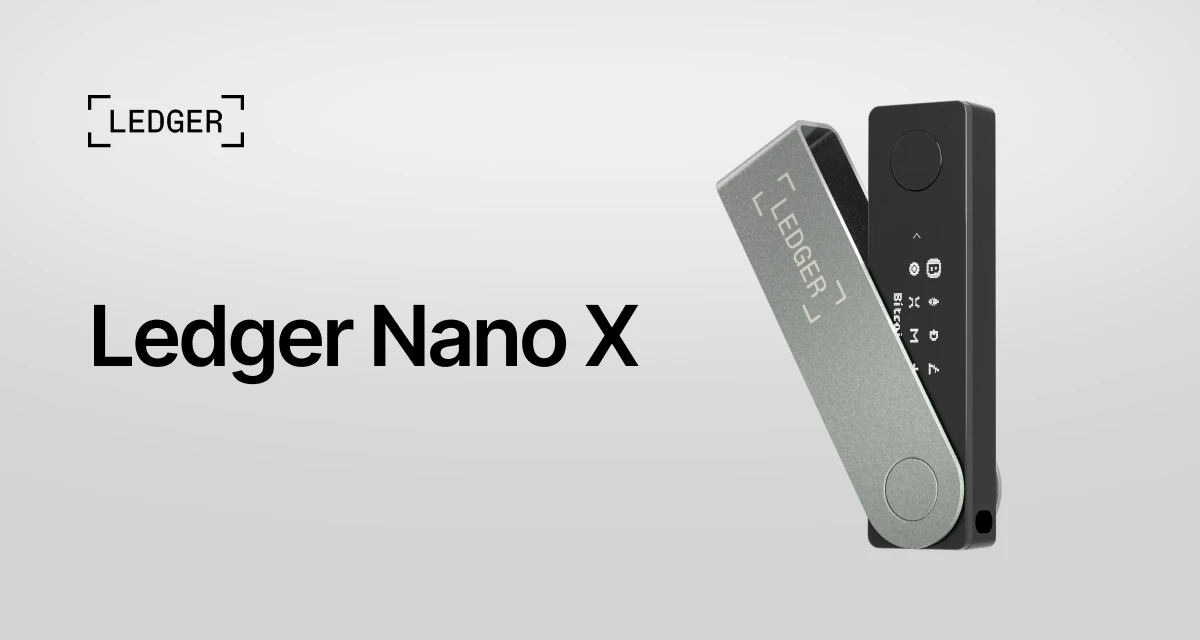- Introduction to Cryptocurrency Wallets
- What Is a Cryptocurrency Wallet?
- The Importance of Wallet Security in the Digital Age
- Understanding Hot Wallets
- Understanding Cold Wallets
- How Cold Wallets Work: Offline Security Explained
- Benefits of Cold Wallets
- Drawbacks and Challenges of Cold Wallets
- Hot Wallet vs Cold Wallet Security: In-Depth Comparison
- Which Is Safer: Hot Wallet or Cold Wallet?
- Best Practices for Cryptocurrency Storage
- Future of Wallet Security in Web3 and Blockchain
- Frequently Asked Questions
- Conclusion: Making the Smart Choice for Your Digital Assets
Introduction to Cryptocurrency Wallets
In today’s digital economy, cryptocurrencies like Bitcoin, Ethereum, and Solana have become mainstream investment tools. But owning crypto isn’t just about buying and holding—it’s about storing it securely. The first lesson every crypto enthusiast learns is that your wallet security determines your financial safety.
For college students and new investors stepping into the blockchain space, understanding the difference between hot wallet vs cold wallet security is essential. Both wallet types serve the same purpose—storing crypto—but their approach to security couldn’t be more different.
Before diving into their differences, let’s break down what a cryptocurrency wallet really is and why security matters so much.
What Is a Cryptocurrency Wallet?
A cryptocurrency wallet is a digital tool that stores the public and private keys used to send and receive cryptocurrencies. Think of it as your personal digital bank vault, except you are the bank.
These wallets don’t technically hold crypto coins; instead, they store the cryptographic keys that give you access to your digital assets on the blockchain. Losing these keys means losing your crypto forever—a mistake even experienced investors have made.
The Importance of Wallet Security in the Digital Age
Cybercrime has evolved alongside technology. As cryptocurrencies gained popularity, hackers began targeting exchanges, wallets, and individuals. In 2022 alone, over $3.8 billion worth of crypto was stolen through cyberattacks and phishing schemes (source: Chainalysis).
For students entering the crypto space, understanding the security models of different wallets can mean the difference between long-term financial growth and irreversible loss.
Understanding Hot Wallets
Definition and Key Characteristics of Hot Wallets
A hot wallet is any crypto wallet connected to the internet. These include web wallets, mobile apps, and desktop software. Their main advantage is convenience—users can instantly send and receive crypto without plugging in devices or scanning QR codes.
Hot wallets are ideal for daily transactions and quick access but are more vulnerable to online threats.
Types of Hot Wallets (Mobile, Desktop, Web)
| Wallet Type | Example Platforms | Security Level | Best For |
|---|---|---|---|
| Mobile Wallets | Trust Wallet, MetaMask | Medium | Everyday users |
| Desktop Wallets | Exodus, Electrum | Medium | Intermediate users |
| Web Wallets | Coinbase Wallet, Binance Wallet | Low-Medium | Beginners |
How Hot Wallets Work: Connection and Functionality
Hot wallets store private keys in internet-connected devices. When you initiate a transaction, the wallet signs it using your private key and broadcasts it to the blockchain. The downside? If your device or browser is compromised, so is your wallet.
Advantages of Hot Wallets
-
Instant access to crypto anytime, anywhere
-
Easy to use for beginners and casual investors
-
Often free and come with user-friendly interfaces
-
Integrated with exchanges for seamless trading
Limitations and Security Risks of Hot Wallets
-
Constant internet connection makes them vulnerable to hacks
-
Phishing attacks, malware, and browser exploits can compromise keys
-
If your device is stolen or infected, recovery may be impossible
Understanding Cold Wallets
Definition and Main Features of Cold Wallets
A cold wallet (or cold storage) is a wallet not connected to the internet. By keeping private keys offline, these wallets are immune to most online attacks.
Common examples include hardware wallets (like Ledger and Trezor) and paper wallets (printed QR codes or keys).
Types of Cold Wallets
| Cold Wallet Type | Example | Security Level | Best For |
|---|---|---|---|
| Hardware Wallet | Ledger Nano X, Trezor Model T | Very High | Long-term investors |
| Paper Wallet | Generated offline and printed | High | Backup storage |
| Air-Gapped Wallets | Fully isolated devices | Maximum | Institutions, whales |
How Cold Wallets Work: Offline Security Explained
Cold wallets operate on a simple but powerful concept: no internet connection = no online attack. When you generate your keys on a cold wallet, they remain offline, reducing exposure to hackers.
Transactions can still be made securely using a process called offline signing — the wallet signs the transaction offline, then the signed transaction is broadcast through an online device.
This ensures the private key never touches the internet, making cold wallets a top choice for investors prioritizing safety over speed.
Benefits of Cold Wallets
-
Maximum Security: Cold wallets protect against malware, phishing, and remote hacking attempts.
-
Offline Key Storage: Since private keys never go online, they’re safe from most cyberattacks.
-
Long-Term Storage: Perfect for holding large amounts of cryptocurrency or long-term investments.
-
Peace of Mind: Hardware wallets come with recovery phrases and PIN protection, adding extra security layers.
Drawbacks and Challenges of Cold Wallets
While they offer unparalleled protection, cold wallets aren’t flawless:
-
Less convenient: Accessing funds takes more steps compared to a hot wallet.
-
Physical vulnerability: They can be lost, stolen, or damaged.
-
Cost: Quality hardware wallets range from $60 to $200.
-
Technical setup: Some models require knowledge of firmware updates and seed phrase backups.
Despite these downsides, cold wallets remain the gold standard for crypto security.
Hot Wallet vs Cold Wallet Security: In-Depth Comparison
To truly grasp the difference between these two, let’s explore their security models, real-world performance, and user experience.
Key Differences in Security Mechanisms
| Criteria | Hot Wallet | Cold Wallet |
|---|---|---|
| Internet Connection | Always connected | Completely offline |
| Vulnerability | Prone to hacks, phishing | Immune to online attacks |
| Accessibility | Instant transactions | Requires setup or device connection |
| Cost | Usually free | Typically paid |
| Storage Purpose | Short-term, active trading | Long-term, secure storage |
| Backup Options | Cloud or exchange | Seed phrase or paper backup |
Hot wallets emphasize convenience, while cold wallets emphasize security. For daily use, a hot wallet works fine; for safeguarding savings, a cold wallet is unmatched.
Real-World Attack Scenarios and Case Studies
Case 1: Mt. Gox Exchange Hack (2014)
Over 850,000 BTC were stolen from Mt. Gox’s hot wallet due to poor security and private key exposure. It remains one of the largest crypto heists in history.
Case 2: Ledger Hardware Wallets (2020 Data Leak)
While Ledger’s devices were not hacked, the customer data breach highlighted a key distinction — even cold wallet providers can face off-chain vulnerabilities.
These examples underline an essential lesson: No system is 100% foolproof, but offline wallets dramatically reduce risks.
Cost, Accessibility, and User Experience Comparison
For students or beginners, hot wallets are often appealing due to their zero-cost setup and simple interfaces. Cold wallets, on the other hand, cater to those ready to invest in long-term protection.
Let’s compare usability from a student’s perspective:
| Aspect | Hot Wallet | Cold Wallet |
|---|---|---|
| Setup Time | Quick (minutes) | Moderate (15–30 mins) |
| Learning Curve | Easy | Moderate |
| Transaction Speed | Instant | Slightly delayed |
| Backup Options | Cloud-based | Physical seed phrase |
| Overall Security | Medium | Very High |
Which Is Safer: Hot Wallet or Cold Wallet?
When discussing hot wallet vs cold wallet security, the general consensus in the crypto community is clear:
👉 Cold wallets are safer for long-term storage.
Hot wallets are useful for active trading or small, frequent transactions. Cold wallets, by contrast, offer institutional-grade protection ideal for holding large sums or storing digital assets long-term.
Expert Opinions and Industry Insights
Experts agree that a hybrid approach—using both hot and cold wallets—is the most practical.
For instance, Vitalik Buterin (Ethereum co-founder) recommends keeping only a small portion of assets in hot wallets and securing the rest in cold storage.
This strategy ensures convenience without compromising on safety.
Common Misconceptions About Wallet Security
-
“My exchange account is my wallet.”
False. Exchanges hold your private keys, meaning you don’t truly own your crypto. -
“Cold wallets can’t be hacked.”
Partially true. While they’re resistant to online attacks, physical theft or loss is still a risk. -
“Hot wallets are unsafe for everyone.”
Not necessarily. For small amounts and frequent transactions, they’re efficient and practical.
Understanding these nuances helps users make informed, secure decisions.
Best Practices for Cryptocurrency Storage
How to Use Hot and Cold Wallets Together (Hybrid Approach)
Combining both wallets is often the smartest move. Here’s how to do it:
-
Step 1: Use a hot wallet (like MetaMask or Trust Wallet) for small, daily transactions.
-
Step 2: Store the majority of funds in a cold wallet (like Ledger or Trezor).
-
Step 3: Regularly transfer profits from your hot wallet to your cold wallet.
-
Step 4: Keep backup seed phrases in two secure locations.
This setup allows you to balance accessibility and safety, minimizing potential losses.
Tips for Maximizing Crypto Security
-
Enable Two-Factor Authentication (2FA).
Always activate 2FA for all exchange and wallet accounts. -
Keep Software Updated.
Outdated wallets may have exploitable vulnerabilities. -
Avoid Public Wi-Fi for Transactions.
Use only trusted networks when sending or receiving crypto. -
Use Strong Passwords & Seed Phrase Management.
Never store passwords digitally. Write them down and secure them offline. -
Monitor Wallet Activity Regularly.
Early detection of unauthorized access can prevent large losses.
Future of Wallet Security in Web3 and Blockchain
Upcoming Technologies and Innovations
The crypto industry continues to innovate in wallet security:
-
Multi-signature wallets: Require multiple approvals before any transaction is processed.
-
Biometric verification: Uses fingerprint or facial recognition to unlock wallets.
-
Decentralized identity (DID): Enhances privacy and ownership verification.
-
Quantum-resistant encryption: Protects wallets from future quantum computing threats.
These technologies aim to make both hot and cold wallets smarter, safer, and more user-friendly.
Regulatory Trends and Institutional Security Measures
Governments and regulatory bodies are also tightening KYC (Know Your Customer) and AML (Anti-Money Laundering) requirements for wallet providers.
This regulation ensures better accountability and reduces the risk of scams, paving the way for secure mass adoption of digital assets.
Frequently Asked Questions
Conclusion: Making the Smart Choice for Your Digital Assets
In the debate of hot wallet vs cold wallet security, there’s no universal answer — only a personal balance between convenience and protection.
For college students or new investors, the key takeaway is this:
-
Use hot wallets for learning, trading, and daily transfers.
-
Use cold wallets for savings and long-term holdings.
As blockchain technology evolves, security will remain at the forefront. Whether you’re storing $10 or $10,000 in crypto, your awareness and practices define your true safety.
For further reading, explore Ledger’s official security guide to learn more about protecting your assets.




Discussion (0)